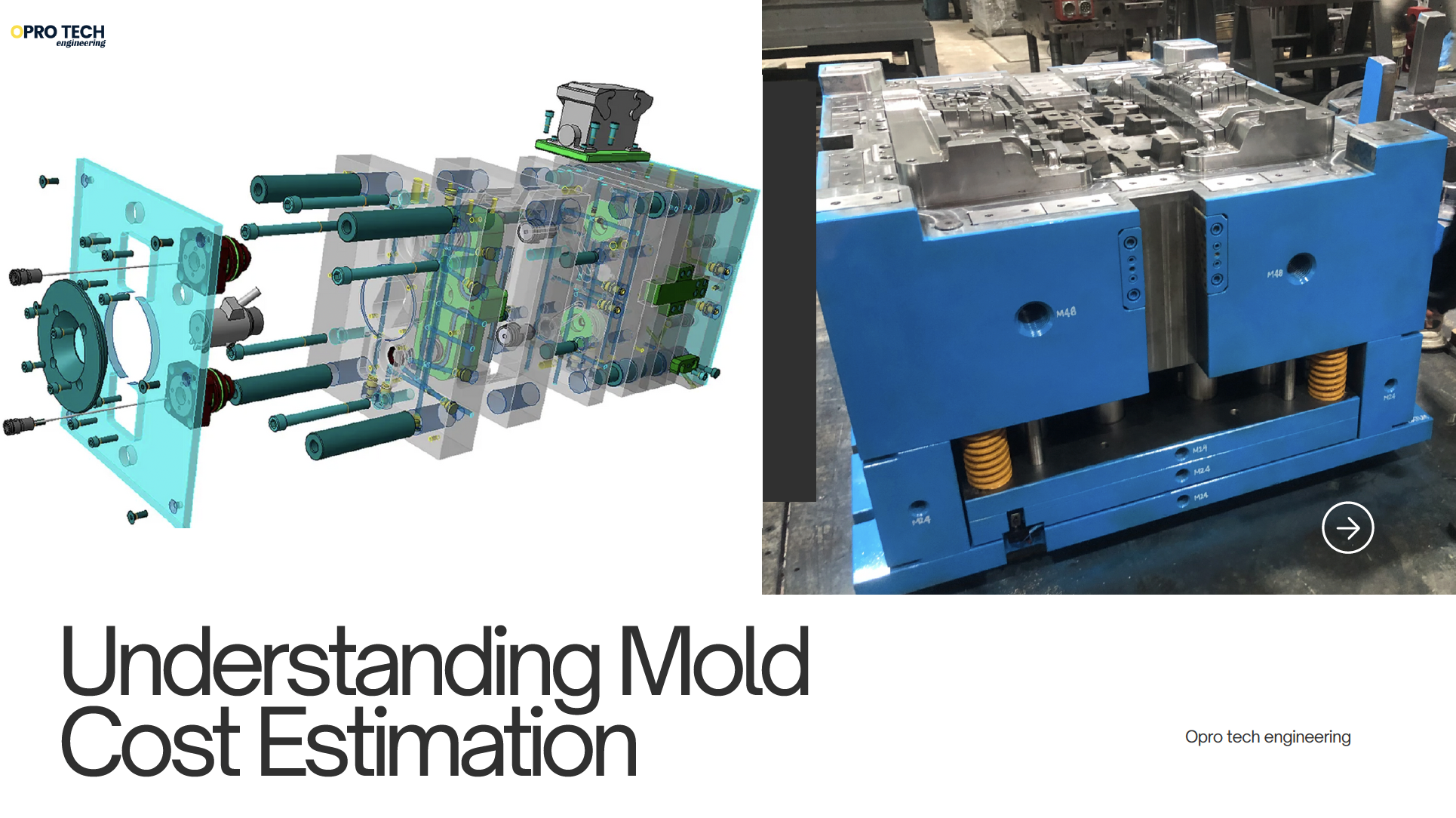Understanding Mold Cost Estimation: Methods, Structure, and Strategy

In the mold manufacturing industry, cost estimation is not just a financial exercise — it’s a reflection of a company’s technical understanding, production capability, and market competitiveness. A scientific and transparent cost estimation system helps both suppliers and customers make rational decisions, ensuring fair pricing and sustainable cooperation.

1. Composition of Mold Cost
A mold’s total cost is a combination of several elements, typically including:
- Material Cost (Cr)
- Design Cost (Cd)
- Manufacturing Cost (Cm)
- Additional Negotiable Costs (M, S, Pf)
The final quotation can be expressed as:
P = Cd + Cm + Cr + Tc + M + S + Pf
2. Mold Material Cost (Cr)
Material cost is calculated based on the type and quantity of material used.
① Based on Actual Consumption
Formula:
Volume × Density × Coefficient × Unit Price
Applicable for: mold base, core, cavity, slider, etc.
② Based on Complexity Estimation
Formula:
Estimated Quantity × Density × Unit Price
Applicable for: electrodes and other irregular components.
③ Based on Material Grade
Summation of unit prices by component type.
Applicable for: hot runner systems, standard parts, sensors, auxiliary materials, etc.

3. Supplier Quotation Strategies
When a mold supplier prepares a quotation, several strategies may be adopted:
- Customer Psychological Pricing
- Historical Data Analysis
- Similar Product Comparison
- Material Cost Estimation
- Forecast-based Cost Quotation
These methods balance market expectations with internal cost realities.
4. Mold Cost Estimation Methods
(1) Intuitive Method
Relies heavily on the estimator’s personal experience and judgment.
Suitable when time is limited or historical data is insufficient.
(2) Analogy Method
Estimates cost by comparing with similar molds from historical projects.
Requires a well-maintained mold database and similarity analysis (shape, size, structure, material).
(3) Parametric Method
Uses measurable parameters (geometrical, physical, or functional) as cost drivers.
Ideal for early-stage cost estimation before detailed design is finalized.
(4) Analytical or Breakdown Method
Breaks down the entire manufacturing process into individual tasks, each calculated by formula:
Processing Cost = (Machining Length / Feed Speed) × Operating Cost
This is the most detailed and accurate method but also the most time-consuming.

5. Principles of Mold Cost Estimation
A reliable cost estimation approach should follow three key principles:
- Scientific Validity – Data and methods must be verifiable through practice.
- Adaptability – The approach should evolve with technological and regional changes.
- Transparency & Rationality – The result should be explainable and fair to both parties.
6. Manufacturing Cost (Cm)
Manufacturing cost is the most significant portion of total mold cost and is calculated as:
Cm = ΣT × A
Where:
- ΣT = total manufacturing hours
- A = unit manufacturing cost (CNY/h)
Manufacturing Hours
ΣT = To × K1 × K2 × K3 × K4 × K5
- To – Basic manufacturing hours
- K1–K5 – Coefficients for cavity depth, product complexity, dimensional accuracy, surface finish, and mold structure
Unit Manufacturing Cost
A = A1 + A2 + A3
- A1 – Labor cost: A1 = Sa / 168
(Sa: average monthly salary and benefits) - A2 – Equipment depreciation:
A2 = Pf × (1 - r%) / y / 12 / 21 / 8
(Pf: purchase price, r: residual rate, y: years of depreciation) - A3 – Power cost:
A3 = Pw × Pe
(Pw: equipment power, Pe: electricity price)
8. Processing Cost Estimation
Each machining process has its own cost structure:
① Milling & Drilling
· Base setup cost
· Face milling / 6-sided machining
· Hole drilling, reaming, tapping
· Surface quality and precision requirements
② Grinding
· External and flat surface grinding
· Angle, arc, chamfer, or groove grinding
· Thin-wall and hard material adjustment
· Surface roughness and accuracy requirements
③ High-Speed CNC Milling
· Cavity machining, cooling holes, waterline drilling
· Accuracy and surface requirements
④ EDM (Electrical Discharge Machining)
· Surface finishing (mirror, matte)
· Micro-hole or micro-slot EDM
· Material influence and size accuracy
· Text engraving or marking
⑤ Wire-Cutting (WEDM)
· Rough cut and multiple finishing passes
· Material and cutting fluid differences (water, oil)
· Cost often calculated by cutting area
Accurate mold cost estimation requires both data and experience.
While intuitive and analogy methods offer speed, the parametric and analytical approaches provide precision and transparency. A well-balanced estimation strategy allows suppliers to remain competitive and ensures customers receive fair, data-driven quotations.
In an era of increasing cost sensitivity and global competition, mastering mold cost estimation is not just a financial skill — it’s a strategic advantage.
Factory add: No 39, Zhen an west road, Changan town , Dong guan city, China.